what is needed to start playing electric guitar
Best guitar pedals for beginners: everything y'all need to know to kickstart your pedalboard
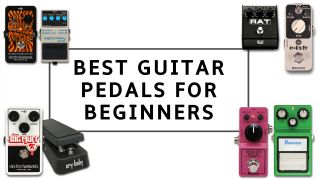
Even before the boutique pedal explosion of the last few years, there was already a dizzying array of options for guitar players to explore and use. As a newcomer to the musical instrument, this tin can be null short of overwhelming. What are they? Why do I need them? What are the best guitar pedals for beginners?
Well, get-go off, it'southward possible yous might not even need them. It's worth reminding yourself that although it's easy to feel like a child in a candy store with all the options available, that pedals are just tools. But similar guitars, they aren't really anything until the player – yous – makes them into something.
Just as unlike guitars have different timbres and tones, and so do pedals – and using them effectively is a style for you as a player to brand an idea or riff really stand out. Some players go experts at sound design using pedals, and it'due south an excellent half-manner-firm between the immediacy of a guitar and having the knowledge required to practice sound design in a studio setting.
All of that said, while it's nice to accept a brace of cool FX on your pedalboard and loads of nice gear, some of the best music ever recorded was made with cheap gear and few-to-no pedals, so always go on in listen that the vocal comes offset.
Okay, disclaimer over. Permit's geek out on the best guitar pedals for beginners!
- 12 killer cheap guitar pedals you need to try
- The best gifts for guitar players
- Build your first board with our guide to the best pedalboards
- Supercharge your furnishings with the best pedalboard power supplies
- Best beginner guitars: nifty acoustic and electrical options
Elevation picks
Best guitar pedals for beginners: where to start?
Sorry to do this, simply our commencement recommendation has to be a wearisome one – get a guitar tuner. Nosotros're fans of the TC Electronic Polytune iii Mini or the Boss TU-3, but we also have to exist honest and say that our first two pedals were a Dominate Metal Zone and a Boss DD-6. We didn't go a tuner until our bandmates started complaining.
So, assuming you, like us, want to go for absurd sounds start, then our two recommendations are simple. The starting time step is to get a bulldoze or baloney. If we could take our time again, we'd probably go for a Big Muff or a ProCo RAT as we've e'er played in heavier bands, aiming for the guitar sounds of grunge bands like Bang-up Pumpkins or progressive metal groups like Tool or Porcupine Tree. If we were in a more low-proceeds, indie or blues group, nosotros'd go for the Tube Screamer or any Tube Screamer clone, though information technology's worth saying that the RAT works actually well at lower gain settings also, especially if you have a expert amp.
2nd, you'll want a delay. Cheque out some clips of the Ibanez Analogue Delay Mini and the Boss DD-3T and decide which one suits your playing style better. We tend to think that the versatility of a digital delay is better for a beginner as information technology gives you more than options while you're finding your feet and your sound. Then again, perhaps yous're somebody who thrives when dealing with creative constraints, in which case maybe the straightforwardness of an analogue delay would be right upwardly your street.
Buying advice
Best guitar pedals for beginners: ownership advice
Broadly speaking, there are four chief types of furnishings to focus on, although there's a lot of subtypes that yous can delve into as your tastes and needs develop.
FUZZ Generated by pushing transistors into clipping, this annoying type of signal mangling divers the tones of early on stone and psychedelia, becoming synonymous with players like Jimi Hendrix. Over time, more refined pedals came out, similar the Big Muff, a pedal that promised smooth, 'violin-like' sustain that was a far cry from the less-controlled audio of pedals like the Superfuzz, Fuzz Confront and Tonebender. Ironically for a fuzz, the Big Muff has more in common with most overdrives than fuzzes in terms of its circuit.
- Best fuzz pedals: a guitar furnishings essential for your pedalboard
- Essential accessory: the all-time prune-on guitar tuners
OVERDRIVE Ushered in by the ground-breaking Ibanez Tube Screamer, the goal of overdrives was simple – to emulate the distinctive sound of clipping or saturation of the guitar signal caused by a tube amp. To some degree, this was achieved, but something else incredibly useful happened – by boosting the guitar signal and then that information technology drove a tube amp into baloney earlier, equally well as making the betoken more mid-frontward, the Tube Screamer also fabricated tube amps audio ameliorate also.
- The best overdrive pedals: explore which bulldoze pedal is right for you
Baloney Substantially a more ambitious overdrive, distortion pedals clipped the guitar signal more heavily. Where overdrives similar the Tube Screamer or Boss Blues Driver employed 'soft clipping' diodes to clip the guitar signal, distortion pedals tend to employ 'hard clipping' after their amplification circuits, which chops upwards guitar signals into something that much more closely resembles a square wave.
- Best baloney pedals: 10 meridian effects for guitarists
Filibuster This upshot which covers a deceptively large spread of pedals. At its core, delay is echo, and the first units in this area did just that, using tape loops. Pedals using bucket-brigade compact fries followed, and and then eventually a bound to digital chips occurred. The thing is, many other types of effects were created by time-based manipulation of signals; flanging was accomplished in the early days by running two record machines and slowing one down; chorus was the same concept but with alternating speed. The more that engineers experimented, the more than effect types they created. Digital delays were the real game changer, every bit they simply recorded and looped a buffer of audio – this in turn led to not only the guitar looper pedal, but also the pitch shifter. Today even the wildest, virtually out-in that location delay, glitch and looping pedals, from the Red Panda Particle to the Montreal Assembly Count to 5 tin trace their origins back to being able to digitally record and replay a buffer of audio.
- The best delay pedals: peak recommendations for your pedalboard
From these categories you get distortion, delay, modulation and pitch shifting; what remains are mainly utility pedals - EQs, line switchers, racket gates and tuners. For shaping your tone, you're likely to ever be relying on some combination of distortion, modulation or filibuster and amp tone to zip in on the sound that's in your head.
But where to start? Let's swoop in with our selection of the best guitar pedals for beginners…
Pedal guide
Our pick of the best guitar pedals for beginners
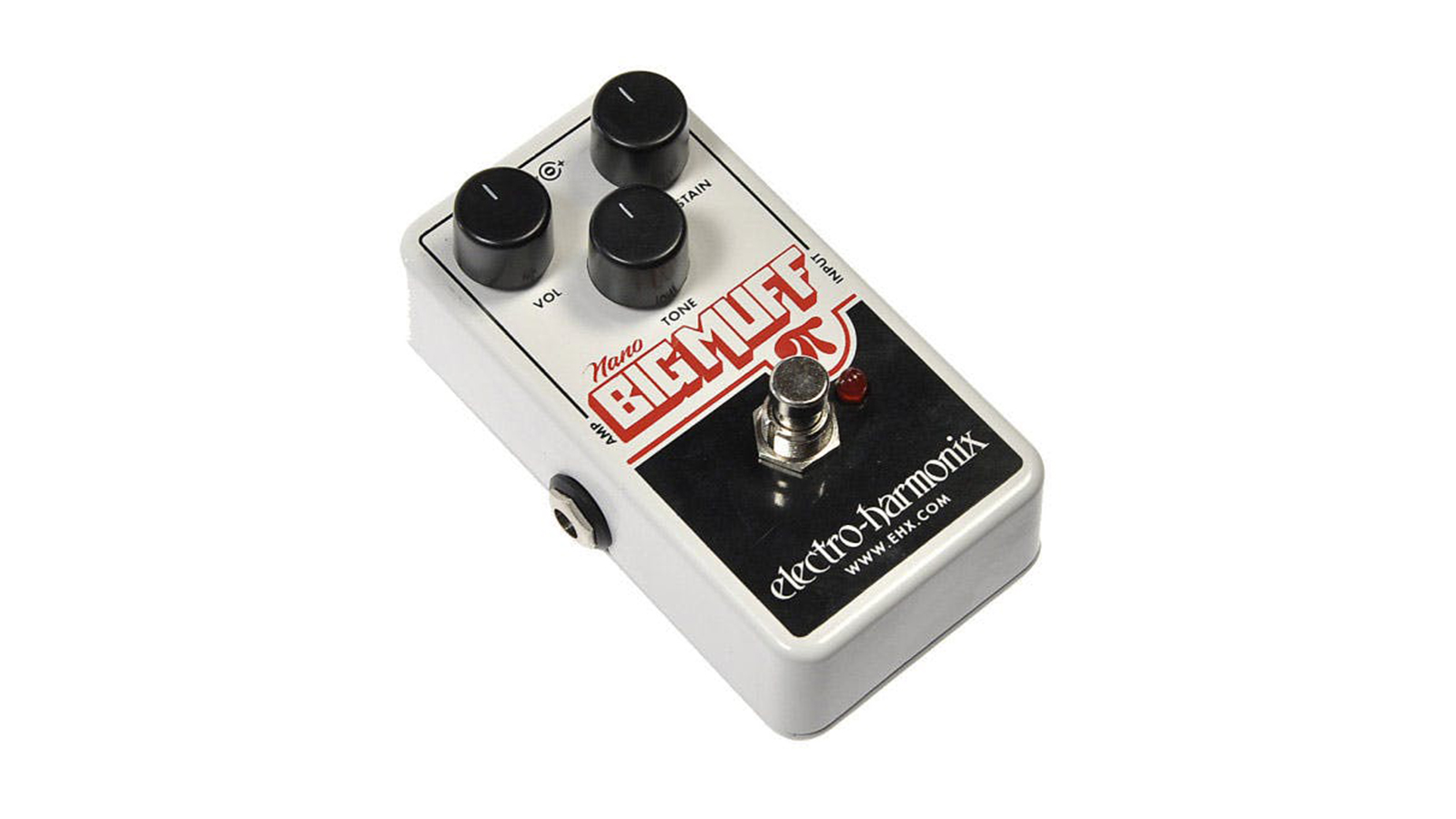
Memorably described to u.s. by one guitarist equally a 'hoover', the Large Muff has been modded, cloned, reissued, rebuilt, and redesigned more than about any other pedal in being. With a distinctive 'scoop' in the guitar mids, the Muff tin can mean that you lot go lost in a band mix – it'due south similar the anti-Tube Screamer in terms of EQ profile – only when it works, in that location'southward piddling else that has the same visceral impact.
Very broadly speaking, there's about five principal versions – although, in total there are over thirty versions by our count, with passionate fans of each - and it's on these that the electric current crop of EHX Big Muffs are based.
The most common is the NYC Muff, which is available as the Nano Big Muff, while at that place's as well several others; the Ram'southward Head, Triangle, Op Amp, and Russian. We could keep about them for days, but the lowdown is this – the Russian is more 'woolly', think Sonic Youth's 100%; the Op Amp is more compressed, and the version that Smashing Pumpkins used on their archetype Siamese Dream LP; the Ram's Head is closer to a Dinosaur Jr., type tone; the Triangle is more old-schoolhouse, a bit smoother and more articulate than the NYC to our ear.
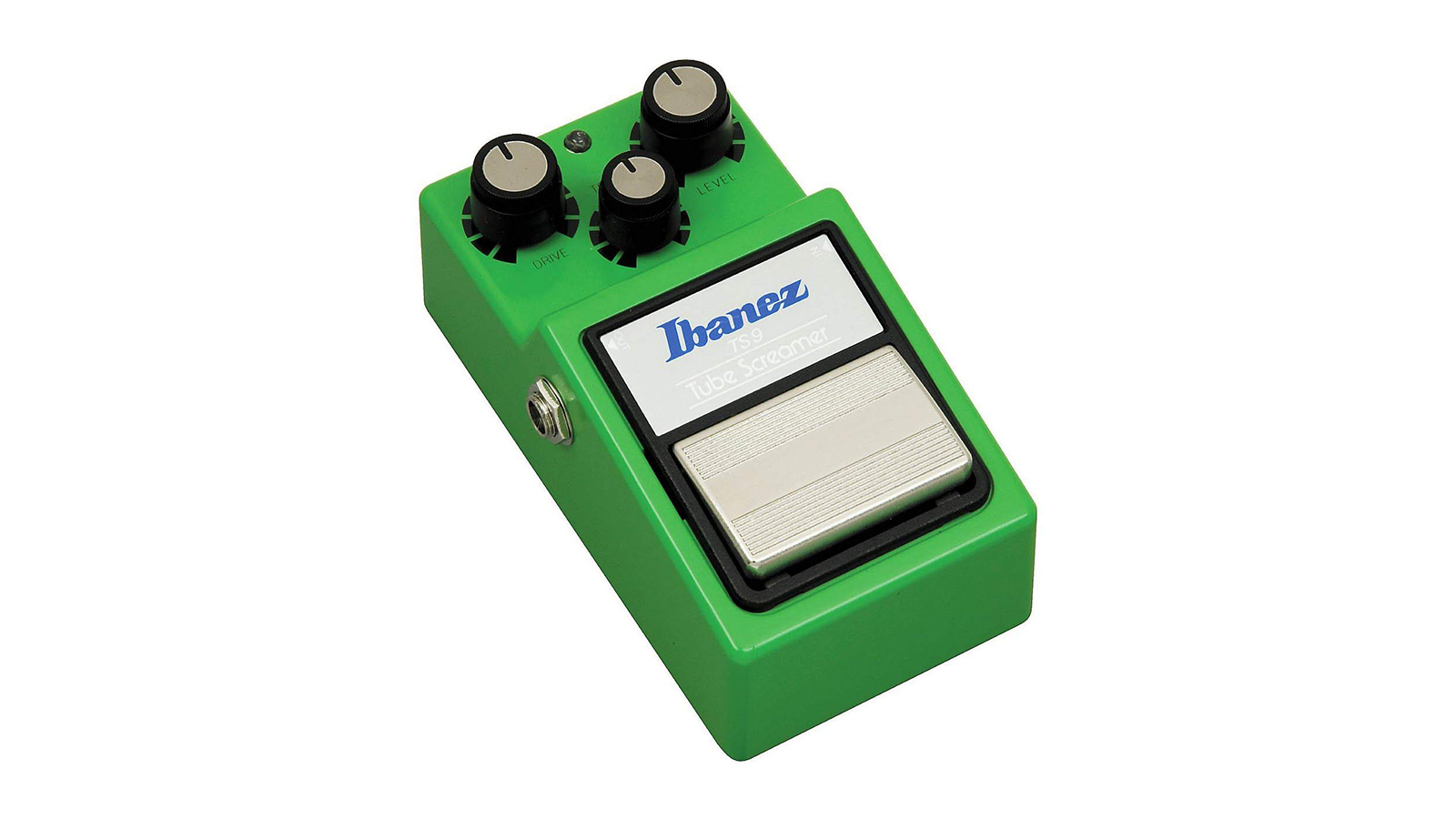
The original overdrive pedal, the Tube Screamer and its descendants withal represent a significant percentage of the worldwide pedal market place just on their own.
In that location'south a reason for this, of grade – not just that it's a versatile drive with a wide range of operation that allows it to be used for everything from dejection to metallic. Its other forcefulness is its EQ profile, which emphasizes the guitar's midrange effectually 1kHz, meaning it suddenly 'pops' in a band mix, either live or in the studio.
Moreover, if you turn the drive command downward and the level up, it functions as a boost, and it'southward for this part that many guitarists acquire i. If you're lucky plenty to have a decent tube amp, or admission to i, boosting a tube amp with a Tube Screamer is likely to be better than well-nigh whatsoever overdrive pedal on the marketplace.
There's a difference between this, the TS9, and the original TS808, merely for all the essays that accept been written on the subject they're similar plenty that a recommendation for one can exist a recommendation for the other, 9 times out of ten. If yous're looking to save some greenbacks, the Ibanez TS Mini Tube Screamer is worth looking at as well.
- The all-time guitar cables for acoustic, bass and electric guitars
- Explore the best beginner guitar amps
- x of the all-time guitars for kids
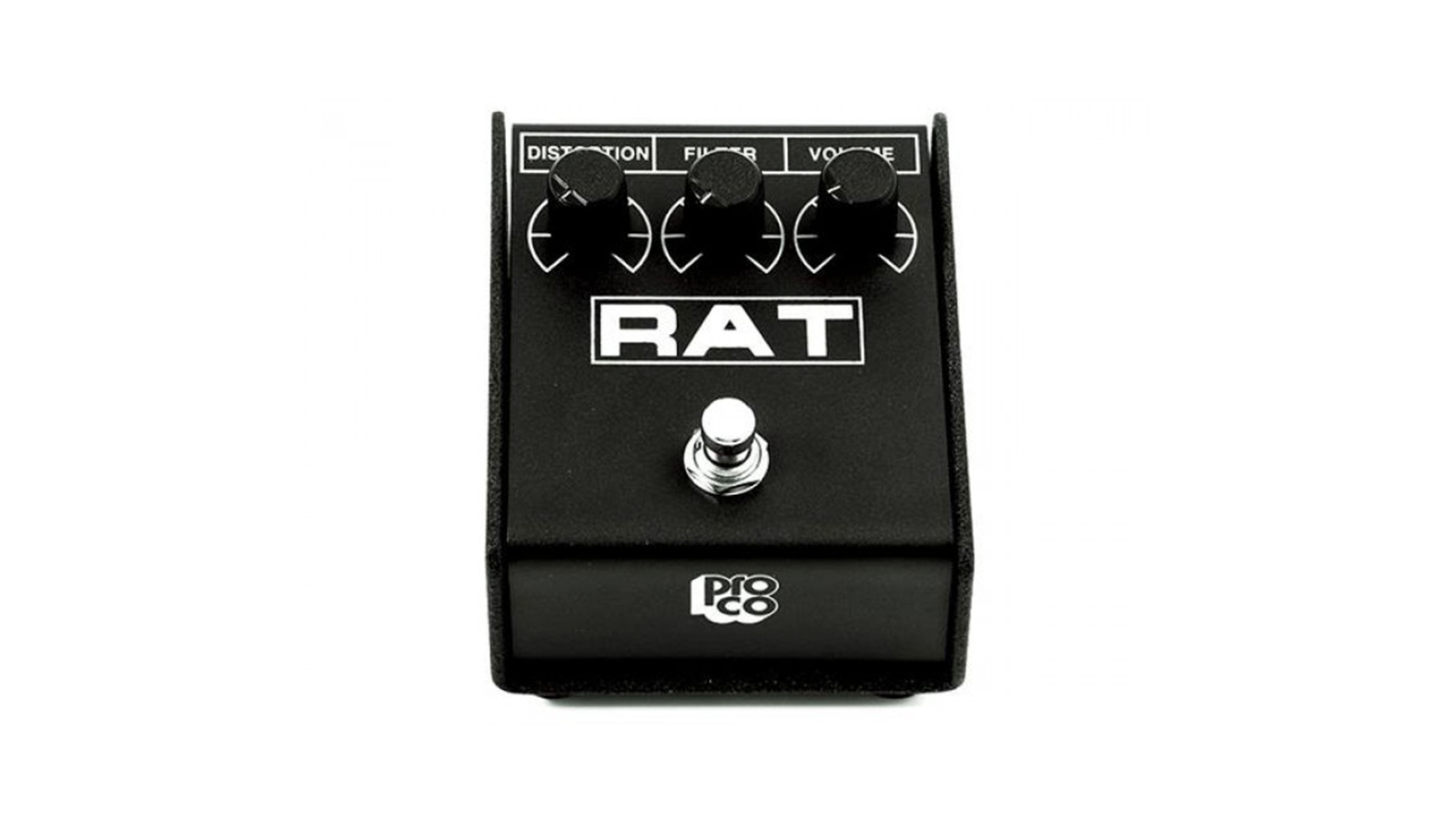
One of the first, and still most recognizable distortions, the ProCo RAT got its unique distortion sound from its LM308 op-amp internally clipping the point into a triangular shape.
Though that's the secret of the RAT's tone, nigh distortions that followed emulated another role of the RAT's circuit – its two so-chosen 'hard clipping' diodes, which also distinguished the harder, more than punchy distortion pedals from softer overdrives like the Ibanez Tubescreamer.
Rightly a archetype, RATs are nevertheless not that expensive, and remain accessible to beginners that desire a huge, punchy distortion audio. More than than that, the RAT also works well at lower proceeds settings, especially into tube amps that already have a chip of dirt on the go. They're a surprisingly versatile distortion pedal and information technology'south difficult to become also wrong.
- All-time beginner electric guitars: ace electrics for beginners
- The best acoustic guitars for beginners: like shooting fish in a barrel strummers for new players
- Immortalise your playing: all-time microphones for recording guitar
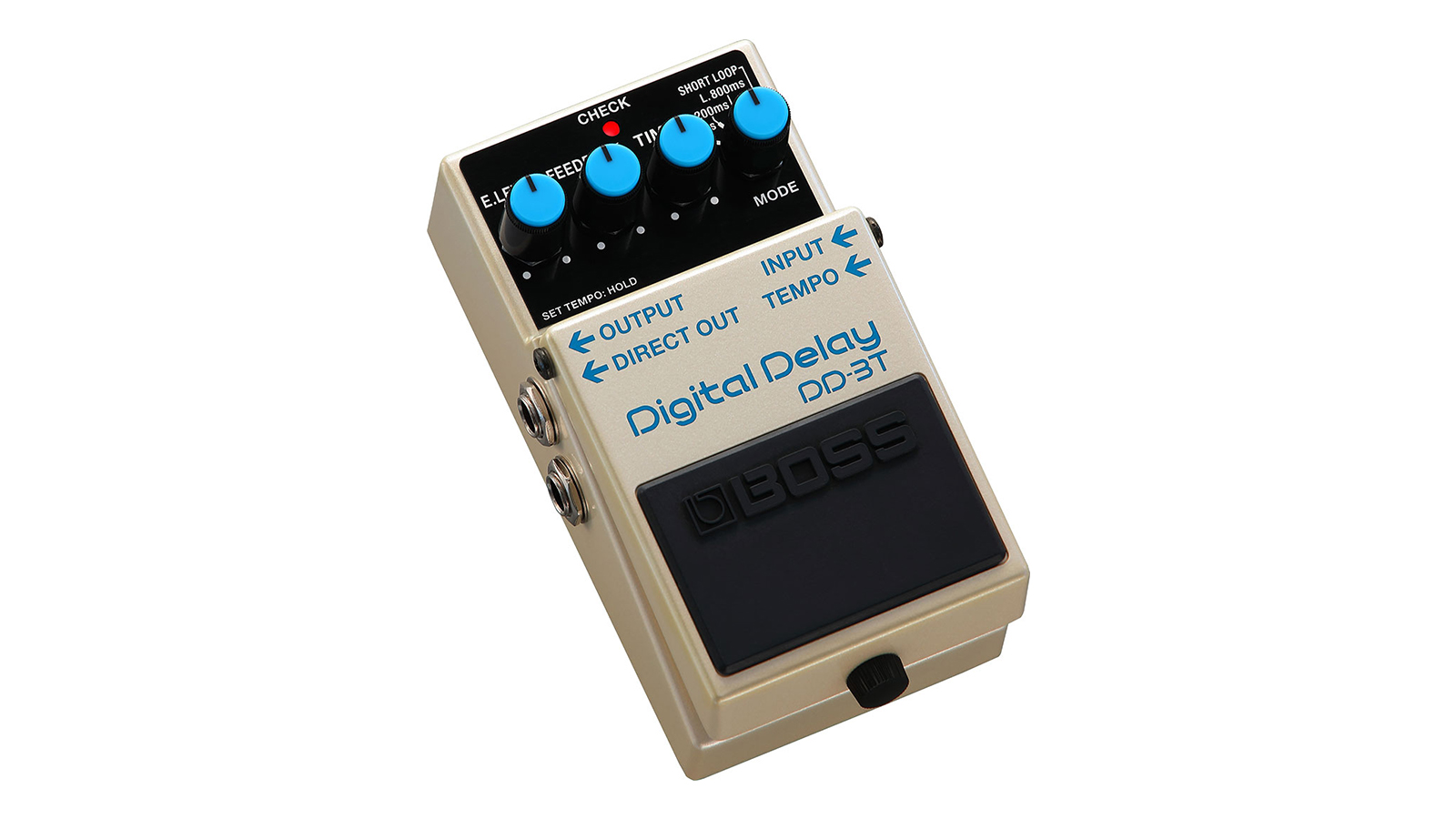
The Dominate DD-iii has been the aureate standard for digital delays ever since its introduction in 1986, and members of the DD serial have been used on records past bands every bit diverse equally The Cult, Melt Banana, Tool and Radiohead. And so many players have made the white-and-blue box their own that it's probably quicker to list the players that haven't owned a DD-series delay at some betoken.
For a digital delay, the DD-three has a very pleasant character, bedding down well into a band mix while retaining enough of that pristine, digital experience that information technology 'chimes' in a style that analogue delays don't, cutting through the meridian end of a mix.
The DD-3T is the well-nigh modern incarnation of this archetype pedal, adding tap tempo to an already formidable platform.

The Cry Baby has become synonymous with 'wah pedal' to the extent that virtually new players are probably all-time served past checking out this wah earlier any others, as it's more than likely the pedal that's been used on all your favourite records.
That said, it'due south not without its problems. It'due south notorious for 'tone suck' and the blueprint is very long-in-the-tooth. Granted, in that location's not a huge corporeality of innovation possible in terms of cadre wah sounds other than frequency ranges, merely at that place are wah pedals with more options and flexibility.
- The best budget guitar amps under $500
- Best inexpensive electrical guitars under $500

Digital delays are reliable and produce pristine, accurate delays, but that might non be desirable. For some types of music a bit of darkness and dirt can add character, and this is why the technologies that preceded the digital delay have never quite gone out of fashion.
One of these was the tape delay, exemplified past the Echoplex and Roland Space Echo, but these vintage units are expensive and difficult to maintain. The other technology was counterpart delay. This relied on arrays of capacitors to delay the sound, and came with its own artifacts – a certain degree of dust, and gyre-off of higher frequencies.
Not just do these qualities have some aesthetic value, just they're as well reasons that analogue delays often bed improve into a mix.
Nonetheless, because of the fries used being comparatively expensive, analogue delays were for a while out of the attain of budget-conscious players, whereas at present there'due south a multifariousness of options, like this great mini unit of measurement from Ibanez, or other pedals like the EHX Memory Toy. We've chosen this for the warm character of its repeats and great form gene.
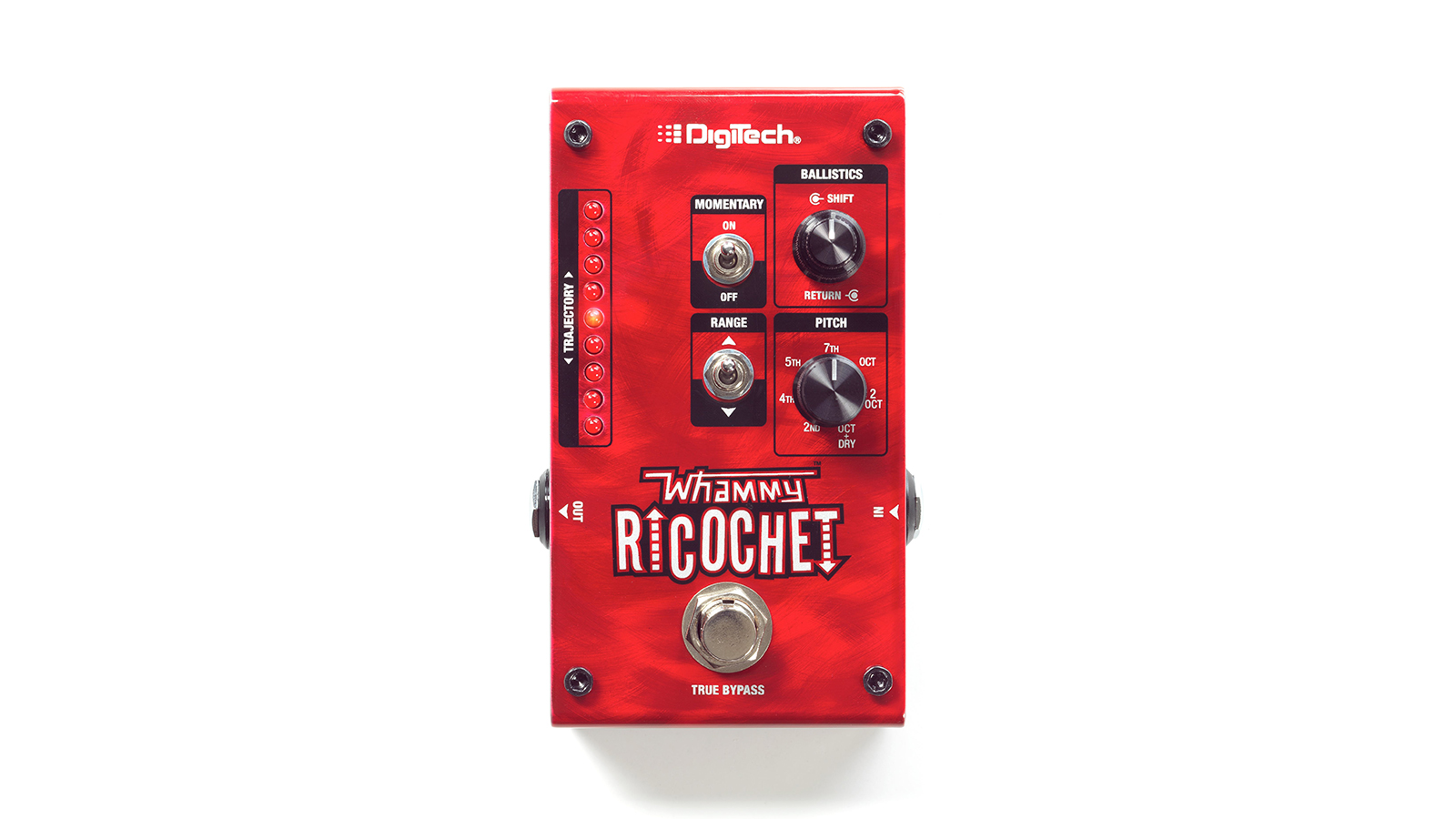
The Digitech Whammy was the original pitch shifter, and to our minds it's still the best.
This small, powerful unit boasts near of the features of its bigger brother, just without the rocking footswitch. In exchange, you get a ballistic control for the rise and fall speed that it hits the target interval and then returns to the cardinal, with the bonus of both momentary and latching options.
It'southward cheap, endlessly inspiring and will completely modify the way you play guitar. Can't say fairer than that.

There's no love lost between Electro-Harmonix and Mooer, specially after the former successfully sued Mooer for cloning their POG pedal. That's probably why the Mooer ElecLady was rebranded to the nonetheless-rather-obvious E-Lady model name.
It'south a flanger, inspired by the classic EHX Electric Mistress, that can also comprehend off a number of chorus-type sounds, making it a pretty versatile start modulation. The reason we're specifically recommending this is twofold – its low toll, and tiny course factor. There's other first-class budget flanger pedals available, but very few are every bit meaty or well-built.
- Go for an all-in-1 solution with the all-time multi-effects pedals
- The best amp modelers for every budget and type of guitarist
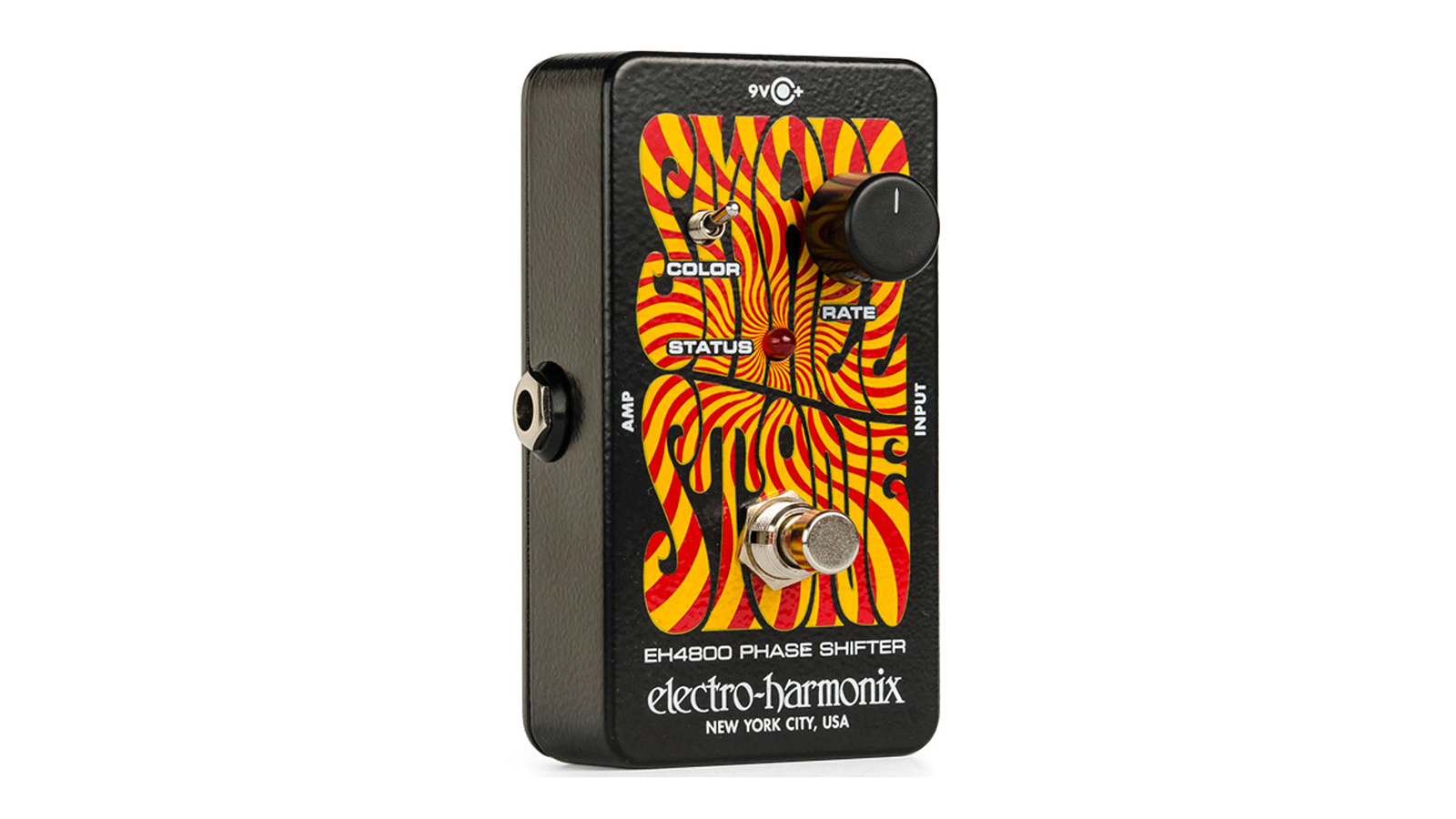
They might not be quite as small as some of the tiny offerings from Mooer and the like, but EHX'southward Nano range are certainly a far weep from the sometimes comically large big-box versions that were knocking around when we were youngsters.
Luckily, they're withal the same great sounds, and the EHX Pocket-sized Stone is the phaser against which nosotros tend to benchmark all others. Once upon a time information technology had and so-called 'tone sucking' issues, simply the modernistic versions take resolved that, so you've got stone solid sounds and true bypass also. Stick a Large Muff in front of information technology, and take off for another world.
Further recommendations
- The best reverb pedals: 10 great options for your pedalboard
- The best guitar tuners: chromatic, polyphonic and strobe options
- The best chorus pedals: summit chorus effects for your pedalboard
- The all-time phaser pedals: our guide to this versatile modulation guitar effect
- The best compressor pedals: raise your electric guitar tone
- The best wah pedals: add a dandy tone shaping effect to your 'lath
- The best looper pedals: get creative with your live guitar playing
- Best flanger pedals from Strymon, Boss, TC Electronic and more

Thank you for reading 5 manufactures this calendar month*
Join now for unlimited access
US pricing $three.99 per calendar month or $39.00 per twelvemonth
United kingdom pricing £2.99 per calendar month or £29.00 per yr
Europe pricing €3.49 per calendar month or €34.00 per twelvemonth
*Read 5 free articles per month without a subscription

Join now for unlimited access
Prices from £2.99/$3.99/€3.49
Source: https://www.guitarworld.com/features/best-guitar-pedals-for-beginners
0 Response to "what is needed to start playing electric guitar"
Post a Comment